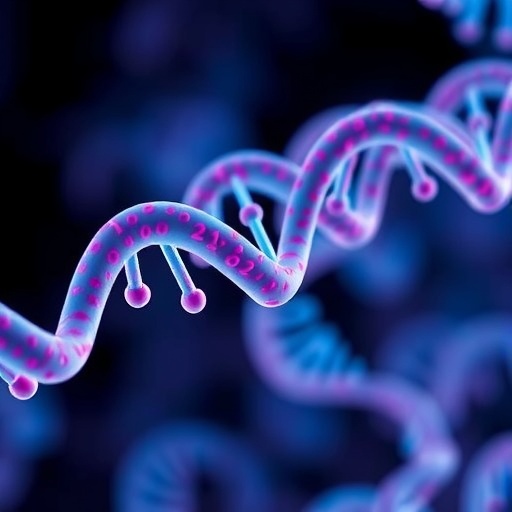
In the delicate world of neonatal care, necrotizing enterocolitis (NEC) continues to represent one of the most formidable challenges faced by clinicians and researchers alike. This devastating intestinal condition predominantly affects preterm infants and is characterized by inflammation and necrosis of the intestinal tissue. Despite advances in neonatal intensive care and an increasing emphasis on human milk as the cornerstone of neonatal nutrition, the incidence of NEC remains troublingly significant. Recent research conducted by Ailumerab and colleagues delves into the paradox of NEC developing in preterm infants exclusively fed on an exclusive human milk diet (EHMD), aiming to elucidate the risk factors that may predispose these vulnerable patients to this life-threatening disease.
The study conducted at a single center employed a case-control design, focusing on preterm infants receiving only human milk-based nutrition to determine the early neonatal and maternal contributors to NEC development. This focus is especially pertinent as EHMD is widely advocated as the optimal feeding strategy to prevent NEC, given the numerous bioactive components and immunomodulatory factors inherent in human milk. However, the investigation reveals that even with such an intervention, certain risk factors continue to drive disease incidence, underscoring the complexity of NEC pathogenesis and pointing to potentially modifiable variables.
Ailumerab et al. meticulously examined both maternal and neonatal profiles, highlighting the intricate interplay of prenatal and postnatal influences on intestinal vulnerability. Early neonatal conditions such as gestational age, birth weight, and hemodynamic instability were assessed alongside maternal variables including hypertensive disorders, antenatal steroid administration, and modes of delivery. This comprehensive approach enabled the researchers to parse out not only the environmental but also the biological triggers that may tip a delicate balance towards intestinal injury despite human milk’s protective milieu.
One of the critical findings of this research indicated that lower gestational age remains a paramount risk factor, even under an exclusive human milk regimen. Infants born at the cusp of viability exhibit underdeveloped intestinal barriers and immune defense, rendering them susceptible to translocation of bacteria and subsequent inflammation. The study elucidates that the immaturity of the gut and dysregulated vascular supply compounds the risk of NEC, suggesting that nutrition alone cannot fully offset the vulnerabilities inherent in extreme prematurity.
In addition, the presence of hemodynamic instability in the early neonatal period emerged as a significant predictor of NEC development. Episodes of hypotension and the necessity for vasopressors may compromise mesenteric blood flow, precipitating ischemia and increasing susceptibility to intestinal injury. This finding lends credence to the theory that circulatory disturbances, compounded by immature autoregulatory mechanisms in preterm infants, play a seminal role in the pathophysiology of NEC despite the protective factors in human milk.
Maternal hypertensive disorders, such as preeclampsia, also featured prominently among the risk factors identified. These conditions can impair placental perfusion and fetal oxygenation, potentially inducing intrauterine growth restriction and predisposing the neonate to compromised organ development. The study highlights that infants born to hypertensive mothers, who are also fed an exclusive human milk diet, still retain a heightened risk of NEC, indicating that antenatal insults may modulate postnatal intestinal resilience.
Intriguingly, antenatal corticosteroid administration, known to enhance lung maturity and improve neonatal outcomes broadly, was scrutinized for its potential impact on NEC risk in this cohort. The analysis suggested that failure to receive antenatal steroids might subtly increase vulnerability, possibly through suboptimal maturation of gut barrier functions and immune defenses. This reinforces the multifaceted benefits of steroid prophylaxis while spotlighting a need for optimal timing and coverage in high-risk pregnancies.
The study also explored the impact of delivery mode, noting a nuanced relationship where cesarean deliveries were not unequivocally protective against NEC. Although cesarean sections might reduce microbial exposure during birth, alterations in early colonization patterns and immune system priming may paradoxically influence intestinal health. This observation points to a delicate microbiome-infant interaction that merits further investigation, especially in the context of exclusive human milk feeding.
Further dissecting the neonatal care trajectory, incidences of patent ductus arteriosus (PDA) and subsequent pharmacologic or surgical interventions were observed to correlate with increased NEC risk. This suggests that systemic circulatory disturbances and therapeutic interventions may create a milieu conducive to mucosal injury or dysbiosis, emphasizing that disease prevention mandates a holistic approach encompassing both nutritional and clinical management elements.
While the protective elements of human milk remain indisputable, this study importantly signals that an EHMD does not confer absolute immunity against NEC. Instead, a constellation of host factors—spanning immaturity, hemodynamic compromise, maternal comorbidities, and clinical interventions—intersect to dictate vulnerability. Consequently, personalized neonatal care plans, vigilant monitoring for hemodynamic instability, and targeted maternal health optimization should be integrated into NEC preventive strategies.
The research conducted by Ailumerab and colleagues underscores the imperative for clinicians to recognize that the battle against NEC extends beyond feeding regimen alone. It calls for a reevaluation of clinical protocols, advocating for enhanced surveillance of at-risk infants, judicious use of vasopressors, and preemptive management of maternal hypertensive disorders. Such comprehensive approaches could potentially attenuate the incidence of NEC in infants otherwise supported by the best available nutritional therapy.
Moreover, this study invites future research to unravel the molecular and microbial mediators underpinning NEC in the context of EHMD. While human milk provides antimicrobial peptides, immunoglobulins, and cytokines pivotal to gut homeostasis, understanding how these factors interact with pathogenic triggers and immature host defenses will be crucial. Investigating the role of the intestinal microbiome, gut permeability, and immune signaling pathways could pave the way for innovative adjunctive therapies.
The findings also have broader implications for neonatal nutrition guidelines and policy-making. They highlight the necessity of maintaining an interdisciplinary approach that integrates obstetric, neonatal, and nutritional expertise to optimize outcomes. Ensuring access to human milk, advocating for maternal health, and tailoring neonatal support based on individualized risk profiles could transform NEC prevention paradigms.
The study presented stands as a clarion call to the neonatal community, reminding us that despite scientific progress, vulnerabilities persist. NEC remains a multifactorial syndrome wherein nutrition is a critical, yet not solitary, defense. Recognizing and addressing the interplay of early neonatal and maternal risk factors holds promise to reduce the burden of this devastating disease and improve survival and quality of life for our most fragile patients.
In conclusion, Ailumerab et al.’s research offers a compelling contribution to our understanding of NEC in preterm infants fed exclusively on human milk. By identifying persistent risk factors despite optimal nutrition, this study challenges prevailing assumptions and underscores the complexity of NEC pathogenesis. The knowledge gleaned here not only informs clinical practice but galvanizes future research avenues aimed at unraveling and ultimately conquering one of neonatology’s most vexing adversaries.
Subject of Research: Risk factors associated with the development of necrotizing enterocolitis in preterm infants on an exclusive human milk diet.
Article Title: Risk factors associated with the development of necrotizing enterocolitis in preterm infants on an exclusive human milk diet: a single-center case-control study.
Article References:
Ailumerab, H., Miller, J.L., DeShea, L. et al. Risk factors associated with the development of necrotizing enterocolitis in preterm infants on an exclusive human milk diet: a single-center case-control study. J Perinatol (2025). https://doi.org/10.1038/s41372-025-02401-2
Image Credits: AI Generated
DOI: https://doi.org/10.1038/s41372-025-02401-2
Tags: bioactive components of human milkexclusive human milk diethuman milk feeding benefitsimmunomodulatory factors in nutritionintestinal inflammation in neonatesmaternal contributors to NECNEC pathogenesis complexitiesnecrotizing enterocolitis in preterm infantsneonatal care challengesneonatal intensive care advancementspreterm infant health risksrisk factors for NEC




